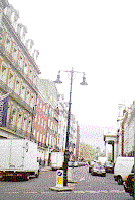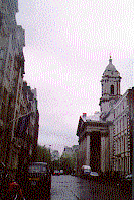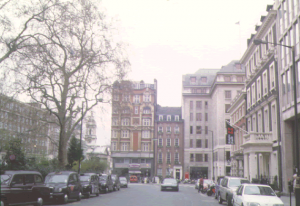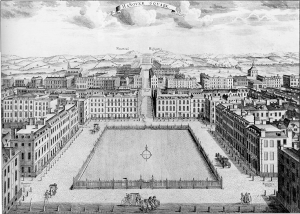Hanover Square and George Street, London

- George St.

- St. George’s Church
Hanover Square and George St. (now St George St) were built from 1714 in honour of George I, the first Hanover sovereign, by the Earl of Scarborough, who, as a prominent Whig, was in favour of the new dynasty.
Scarborough developed the estate under a lease from the ground landlord, Sir Benjamin Maddox (whose name survives in a street); the square was mostly inhabited by Whig ‘people of distinction.’
The rating book has been preserved.
Some buildings dating from the origin in the Square and in George St can be seen.
George St towards the North, with St George’s Church to the right and Hanover Square in the distance.
St George’s was built from 1721 to 1725 by John James, one of Wren’s assistants; the tower with its coupled columns set diagonally at the angles is inspired by Wren’s constructions.
The houses opposite date from the 18th century.

- View of Hanover Square
- Edward Dayes, View of Hanover Square towards the South opening into George St
(c.1780), an exercise in perspective
[click on the picture to enlarge it]

- Surviving houses: n°16________n°20-21
- [click on the picture to enlarge it]
The surviving houses can be identified when comparing Dayes’s view with a present-day photograph from a similar viewpoint

- Hanover Square
- Hanover Square towards the North, with the view towards the twin hills of Hampstead and Highgate.
[click on the picture to enlarge it]
It is mentioned in Fielding’s Tom Jones as a place that the castaway hero cannot afford to haunt when he arrives in London.
But later in the novel, it is in a house near Hanover Square that he meets Lady Bellaston.

